ATSE Awards 2022
Clunies Ross Innovation Award
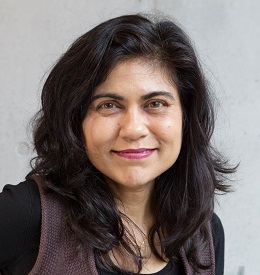
Scientia Professor Veena Sahajwalla FAA FTSE, University of New South Wales
Sustainable Systems Innovator
Professor Veena Sahajwalla is known globally for inventing a patented Polymer Injection Technology known as Green SteelTM where coke and coal are partially substituted with waste rubber tyres in electric arc furnace steel making, not only delivering a more environmentally friendly outcome but improving and enhancing the steel making process.
Veena is the Director of the UNSW Sustainable Materials Research and Technology (SMaRT) Centre creating innovative solutions for the world’s biggest waste challenges. The Centre is now doing its next generation of Green Steel research involving using additional waste resources usually destined for landfill, including coffee grounds and problematic plastics, as coke and coal alternatives that also contribute hydrogen to further enhance the steel production process.
Veena and SMaRT are also commercialising their breakthrough MICROfactorieTM Technologies that transforming diverse wastes – including textiles, glass and plastics – into value-added products such as high-grade filaments for 3D printing and Green Ceramics for the built environment. MICROfactorieTM. The ceramics technology was one of only ten innovations globally featured at UNESCO’s 2020 Netexplo Forum.
A hallmark of Veena’s stellar career has been her ability to collaborate with a wide range of industry, government and research partners, resulting in many breakthroughs that are fit for purpose and are being commercialised to meet real world challenges.
Clunies Ross Entrepreneur of the Year Award
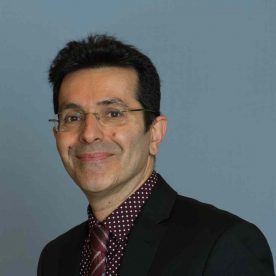
Professor Saeid Nahavandi FTSE – Deakin University
Haptic-tech Systems Pioneer
Professor Saeid Nahavandi is recognised internationally for his work on intelligent systems and simulation technologies, including haptics. Haptic technology creates an experience of touch by applying forces, vibrations, or motion to the user.
Saeid’s research has been translated into defence and civilian applications. He is particularly well known for his brainchild, the universal motion simulator, a world-first haptically-enabled robotic motion platform that functions as a vehicle or aircraft simulator for contested environments.
The simulator allows users to experience situations in their entirety, including full range of motion that can be adjusted to suit many forms of training that aren’t possible in reality. Training using advanced virtual reality technology is useful for engineering, military, medicine, and education applications.
Saeid heads Deakin University’s Institute for Intelligent Systems Research and Innovation. He consults to government, and civilian and defence industry in Australia, the USA, and Europe and has previously consulted to NASA and NATO.
Clunies Ross Knowledge Commercialisation Award
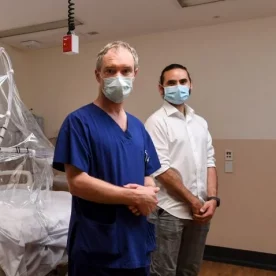
Professor Jason Monty, University of Melbourne and Dr Forbes McGain, Western Health
COVID-19 Healthcare Game-Changers
Associate Professor Forbes McGain is an intensive care physician and anaesthetist at Western Health. Professor Jason Monty is head of the University of Melbourne’s Department of Mechanical Engineering and an expert on fluid dynamics, with specific expertise in aerosol transport.
In March 2020, Forbes contacted Jason asking for assistance in protecting the safety of healthcare workers attending to patients infected with COVID-19. Forbes’ idea was for something like a pram’s rain hood that could be placed over the head and torso of an infected patient to contain the virus particles.
The Medihood is the result of this unique collaboration. It protects healthcare workers and nearby patients from COVID-19, and other infectious respiratory diseases, by containing and filtering the infectious air expelled by a patient, while also improving patient outcomes.
Despite the timeframe of less than 12 months, the scientific rigour expected of high quality technological science and engineering research projects was maintained.
Forbes and Jason directed a team including colleagues from the University of Melbourne departments of Mechanical Engineering, Earth Sciences, and Infectious Diseases, along with medical, nursing, and physiotherapy specialists from Western Health, and additional experts from CSIRO’s Oceans and Atmosphere team and the Doherty Institute for Infection and Immunity.
Melbourne-based flag manufacturer Evan Evans was appointed product development and commercialisation partner, convinced of the efficiencies it could achieve by re-purposing its flag-making technology to manufacture the Medihood.
The multi-award-winning Medihood is already being used in more than 145 hospitals around Australia and has also been adopted internationally.
ICM Agrifood Award
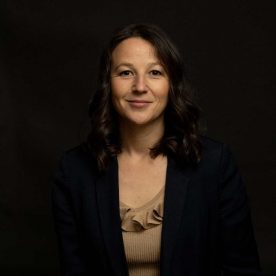
Dr Zoë Doubleday, University of South Australia
Seafood Safeguard Specialist
Dr Zoë Doubleday has used her combined expertise in marine ecology and geochemistry to develop a method to trace the provenance of seafood. Her aim is to help combat seafood fraud and illegal fishing, practices that threaten Australia’s multi-billion-dollar seafood industry.
Seafood fraud occurs when consumers are deceived about where seafood has originated. Lesser quality seafood from areas with limited regulation is labelled falsely, enabling unsustainable fishing to flourish.
Zoë’s technology measures the chemical composition of seafood’s bones and shells. Certain chemicals are absorbed by marine animals as they develop, with levels differing depending on where the animal has lived. By comparing the seafood’s chemical composition with chemical maps of the ocean, the industry can identify the waters from which that seafood has come. This unique method can be used for many marine species.
Zoë’s work increases the integrity of the global seafood trade and provides greater confidence for consumers.
ICM Agrifood Award
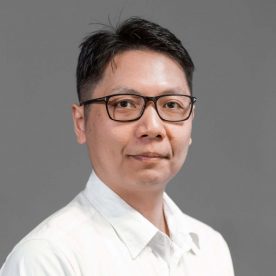
Dr George Chen, University of Melbourne
Dairy Industry Innovator
Dr George Chen is a chemical engineer specialising in membrane technology. He has led the development of several breakthrough techniques enabling the dairy industry to reduce waste and energy usage while enhancing sustainability and turnover.
One breakthrough has made milk powder production less energy intensive. Dairy powders are used in commercial baking and to manufacture chocolate, ice cream and infant milk. Australia manufactures more than 220,000 tonnes of milk powder a year. To produce the powder, however, significant energy levels have been required for water evaporation and drying.
George’s team, in collaboration with the University of Surrey, discovered that a by-product of cheese-making (salty whey) can be used instead, more efficiently concentrating milk for powder production and reducing energy use by up to 20 per cent.
Collaborating with industry, George has successfully demonstrated the technical feasibility of several new technologies at bench and pilot scale, and evaluated their financial viability.
Batterham Medal for Engineering Excellence
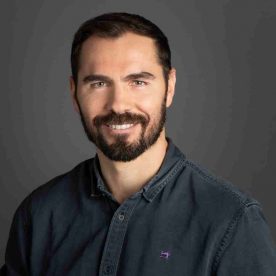
Dr Aaron McFadyen, Queensland University of Technology
Drone Automation Accelerator
Dr Aaron McFadyen is an early career researcher who has developed air traffic management technology enabling the safe expansion of drone flight numbers over urban areas.
The rapid expansion of the drone market required transformative change as the previous process for approving flights in controlled airspace was manual and could take weeks.
In close collaboration with authorities, Aaron led development of key technology now underpinning Australia’s automated approval system for drone flights.
His focus on creating autonomous technologies that balance regulatory, safety, and commercial imperatives drew on his research innovation, aerospace engineering skills, and practical aviation experience as a pilot.
Aaron’s game-changing technology has helped reduce drone flight approval times from weeks to minutes, saving operators and authorities hundreds of thousands of dollars while increasing opportunities for Australian industry.
The system focuses on drone use in highly controlled airspace around airports but it can be scaled up to cover all Australian airspace.
David and Valerie Solomon Award
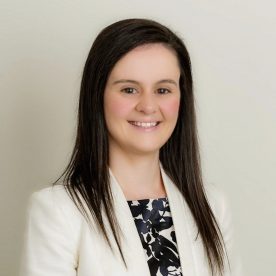
Associate Professor Laura Downie, The University of Melbourne
Vision Health Innovator
Associate Professor Laura Downie is recognised internationally for her leadership in evidence-based vision care, particularly in the area of dry eye disease for which she has engaged with leading international bodies, including the World Health Organisation (WHO).
Dry eye disease is a common eye condition in developed countries, affecting about 20 per cent of adults. Accurate and early diagnosis is a major clinical challenge because many current tests are invasive, time-consuming and inaccurate.
Laura co-invented a device that has capacity to revolutionise dry eye diagnosis. The Acoustically-Driven Microfluidic Extensional Rheometry (ADMiER) device enables eye care practitioners to gently take a patient’s tear droplet and test it immediately to determine if the patient has dry eye disease and, if so, which subtype.
Patients will benefit from enhanced diagnosis and more well-informed treatment, leading to improved outcomes. Laura received the 2019 American Academy of Optometry Foundation’s Korb-Exford career development grant to support the ADMiER device’s clinical validation. Laura is now leading a comprehensive cross-disciplinary development team to progress the technology towards clinical translation.
Ezio Rizzardo Polymer Scholarship
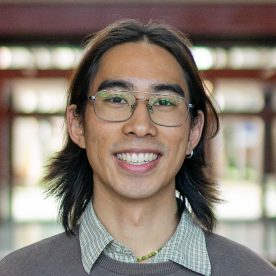
Jefferson Lam, Monash University
Plant-to-Panel Solar Engineer
Jefferson Lam is a PhD student engaged in developing the next generation of solar panels.
Technology has a history of taking cues from nature. Jefferson’s vision of ubiquitous solar energy available at low cost inspired him to examine anew the solar energy harvesting systems of plants, developed over millennia.
His research proposal places polymer science and engineering at the forefront, replicating structures seen in plant biology and applying them onto polymers for use in lightweight solar panels.
Jefferson is intent on achieving an important step in the evolution of next-generation solar devices. He wants to contribute to a revolution in the development and widespread deployment of solar energy at ultra-low cost.
Jefferson has built a solid foundation for his continued work towards this vision. He has two STEM degrees, in materials engineering and chemistry, a strong grounding in polymer sciences and renewable energy, and three Dean’s List awards.
ATSE President’s Medal
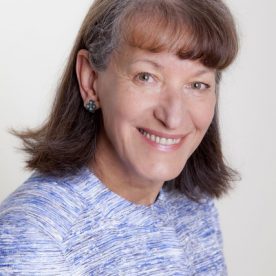
Dr Joanne Daly PSM FTSE
ATSE Change Champion
Professor Hugh Bradlow presented the inaugural ATSE President’s Medal to Dr Joanne Daly PSM FTSE in recognition of her extraordinary commitment and exceptional contribution to the Academy. Dr Daly has served as Chair of ATSE’s Assembly and Chair of the ACT Division. As a member of the Agriculture and Food Forum, she has contributed to major policy reports on climate change and agricultural futures. Dr Daly is a champion for change in ATSE’s governance and membership strategies, and her contributions have shaped ATSE for the better.